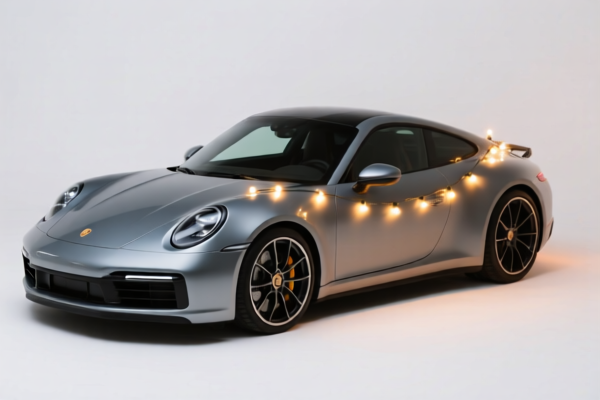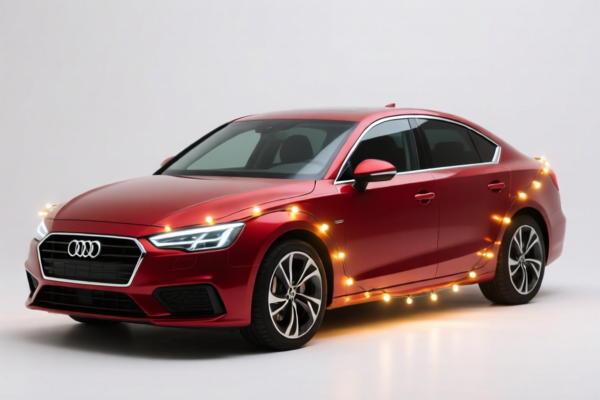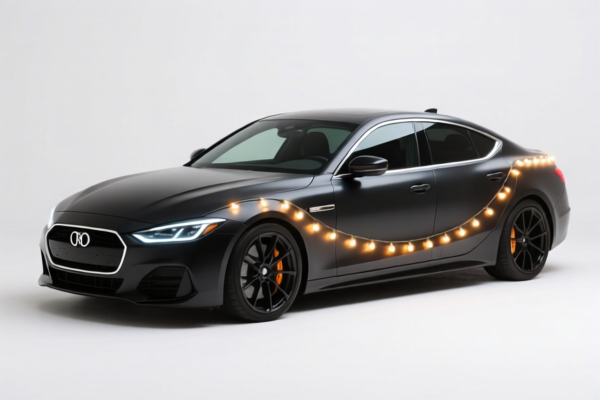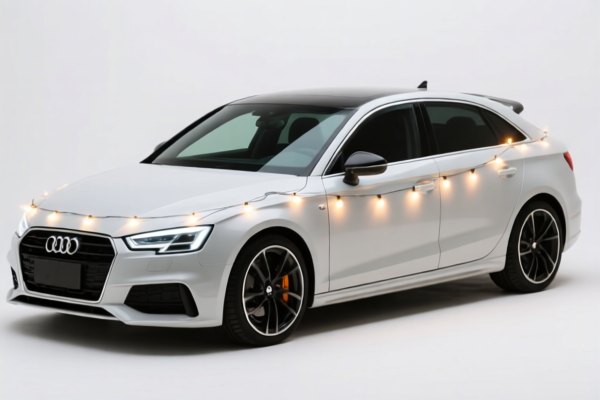| HS Code | Official Doc | Tariff Rate | Origin | Destination | Effective Date |
|---|---|---|---|---|---|
| 8512202080 | Doc | 55.0% | CN | US | 2025-05-12 |
| 8512204040 | Doc | 57.5% | CN | US | 2025-05-12 |
| 8539100010 | Doc | 57.0% | CN | US | 2025-05-12 |
| 8539520091 | Doc | 32.0% | CN | US | 2025-05-12 |
| 9405416000 | Doc | 61.0% | CN | US | 2025-05-12 |
| 9405418410 | Doc | 58.9% | CN | US | 2025-05-12 |
| 9403991040 | Doc | 80.0% | CN | US | 2025-05-12 |
| 9403704020 | Doc | 55.0% | CN | US | 2025-05-12 |
| 9503000090 | Doc | 30.0% | CN | US | 2025-05-12 |
| 9503000071 | Doc | 30.0% | CN | US | 2025-05-12 |
| 8517140020 | Doc | 30.0% | CN | US | 2025-05-12 |
| 8517620090 | Doc | 30.0% | CN | US | 2025-05-12 |




Car Interior & Exterior Lighting
Car lighting encompasses systems illuminating both the vehicle’s interior and exterior, serving functional and aesthetic purposes. Advances in technology have led to diverse lighting options beyond traditional halogen bulbs.
Exterior Lighting
Purpose: Primarily for visibility, signaling, and safety. Modern exterior lighting also heavily emphasizes styling and brand recognition.
Common Types:
- Headlights: Project light forward for driving at night.
- Halogen: Traditional, least expensive, but produces the most heat and has the shortest lifespan.
- LED (Light Emitting Diode): More energy-efficient, longer lifespan, brighter output, and available in various color temperatures. Increasingly standard.
- HID (High-Intensity Discharge): Brighter than halogen, but require ballasts and can produce glare. Less common in new vehicles.
- Laser: Offers the longest range but is typically used in conjunction with LED headlights.
- Taillights: Indicate the vehicle's presence and braking status to following drivers. Often use LED technology.
- Brake Lights: Illuminate brightly when the brakes are applied. LEDs are standard for faster response time.
- Turn Signals: Indicate intended direction of travel. LEDs are common.
- Fog Lights: Enhance visibility in low-visibility conditions (fog, rain, snow). Can be halogen or LED.
- Daytime Running Lights (DRL): Increase vehicle visibility during daylight hours. Typically LED.
- Cornering Lights: Illuminate the side of the road when turning. Often integrated with headlights.
- License Plate Lights: Illuminate the vehicle's license plate. Typically LED.
Function:
- Illumination: Providing visibility for the driver and others.
- Signaling: Communicating the driver’s intentions (turning, braking, reversing).
- Safety: Enhancing visibility to prevent accidents.
- Styling: Contributing to the vehicle’s overall aesthetic design.
Usage Scenarios:
- Night driving: Headlights, taillights, fog lights.
- Low-visibility conditions: Fog lights, DRLs.
- Turning/Changing lanes: Turn signals.
- Braking: Brake lights.
- Parking/Reversing: Reverse lights.
- Daytime visibility: DRLs.
Interior Lighting
Purpose: Provides illumination for the driver and passengers, enhances comfort and convenience, and contributes to the vehicle’s aesthetic appeal.
Common Types:
- Dome Lights: Provide general illumination inside the cabin. Typically LED.
- Map Lights: Focused illumination for reading maps or documents. Typically LED.
- Glove Box Lights: Illuminate the glove box compartment. Typically LED.
- Footwell Lights: Illuminate the area around the driver and passenger’s feet. Often LED, and increasingly customizable in color.
- Dashboard Lights: Illuminate gauges and controls.
- Ambient Lighting: Decorative lighting used to create a specific mood or atmosphere. Often LED and customizable in color.
- Reading Lights: Provide focused illumination for passengers.
Function:
- Illumination: Providing visibility inside the cabin.
- Convenience: Facilitating tasks such as reading or locating items.
- Safety: Providing illumination for emergency situations.
- Styling: Contributing to the vehicle’s overall aesthetic design.
Usage Scenarios:
- Night driving: Dome lights, map lights.
- Locating items: Glove box lights, trunk lights.
- Reading: Map lights, reading lights.
- Creating a specific atmosphere: Ambient lighting.
- Emergency situations: Dome lights, flashlight functionality.
Technology Trends
- LED Technology: Dominating both interior and exterior lighting due to efficiency, lifespan, and design flexibility.
- Adaptive Lighting: Headlights that adjust their beam pattern based on driving conditions and steering angle.
- Laser Lighting: Offering extended range and visibility.
- Matrix LED Headlights: Allow for selective illumination of different areas of the road without blinding other drivers.
- Ambient Lighting Customization: Increasingly sophisticated systems allowing for a wide range of color and brightness options.
- Smart Lighting Systems: Integration with vehicle systems for automated control and features.
Car interior and exterior lighting encompasses a range of electrical components used for illumination and signaling in vehicles. Here's a breakdown of relevant HS codes based on the provided information:
- 8512.20.20.80: This HS code covers electrical lighting or signaling equipment (excluding articles of heading 8539) used for cycles or motor vehicles, specifically other lighting or visual signaling equipment – lighting equipment. The base tariff is 0.0%, with an additional tariff of 25.0%, increasing to 30% after April 2, 2025, resulting in a total tariff of 55.0%.
- 8512.20.40.40: This code also falls under electrical lighting or signaling equipment for cycles or motor vehicles, categorized as other lighting or visual signaling equipment – visual signaling equipment. It applies to vehicles under subheading 8701.21, 8701.22, 8701.23, 8701.24, 8701.29 or heading 8702, 8703, 8704, 8705 or 8711. The tariff structure is 2.5% base, 25.0% additional (increasing to 30% after April 2, 2025), for a total of 57.5%.
- 8539.10.00.10: This HS code pertains to electrical filament or discharge lamps, including sealed beam lamp units and ultraviolet or infrared lamps; arc lamps; light-emitting diode (LED) light sources; parts thereof – sealed beam lamp units for vehicles under subheading 8701.21, 8701.22, 8701.23, 8701.24 or 8701.29 or heading 8702, 8703, 8704, 8705 or 8711. The tariff is 2.0% base, 25.0% additional (increasing to 30% after April 2, 2025), totaling 57.0%.
- 8539.52.00.91: This code covers electrical filament or discharge lamps, including sealed beam lamp units and ultraviolet or infrared lamps; arc lamps; light-emitting diode (LED) light sources – light-emitting diode (LED) lamps, other. The tariff is 2.0% base, 0.0% additional (increasing to 30% after April 2, 2025), for a total of 32.0%.
- 9405.41.60.00: This HS code relates to luminaires and lighting fittings including searchlights and spotlights and parts thereof, not elsewhere specified or included; illuminated signs, illuminated nameplates and the like, having a permanently fixed light source, and parts thereof not elsewhere specified or included – other electric luminaires and lighting fittings – photovoltaic, designed for use solely with light-emitting diode (LED) light sources – of base metal – other. The tariff is 6.0% base, 25.0% additional (increasing to 30% after April 2, 2025), totaling 61.0%.
- 9405.41.84.10: This code covers luminaires and lighting fittings including searchlights and spotlights and parts thereof, not elsewhere specified or included; illuminated signs, illuminated nameplates and the like, having a permanently fixed light source, and parts thereof not elsewhere specified or included – other electric luminaires and lighting fittings – photovoltaic, designed for use solely with light-emitting diode (LED) light sources – other – other lighting sets. The tariff is 3.9% base, 25.0% additional (increasing to 30% after April 2, 2025), totaling 58.9%.
Important Note: The applicable HS code depends on the specific characteristics of the lighting component (e.g., type of lamp, vehicle type, whether it's a complete fitting or just a lamp).
Declaration Precautions: For HS code 8539.52.00.91, which covers LED lamps, it's important to verify the materials used in the construction of the lamps.
Customer Reviews
No reviews yet.